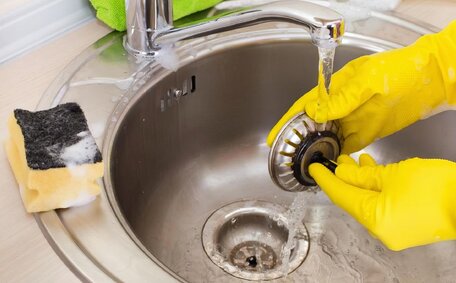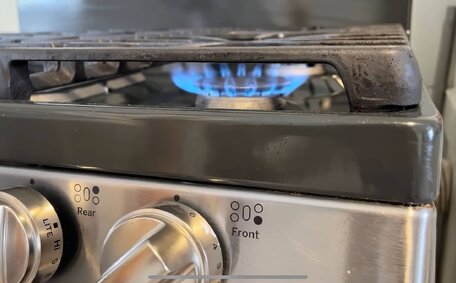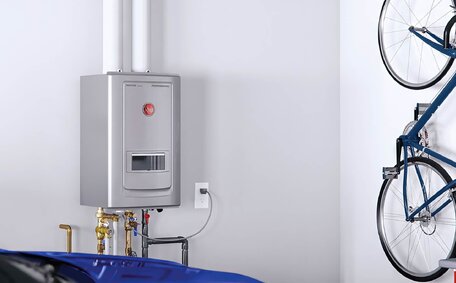How Different Pipe Materials Withstand Freezing Temperatures
When it comes to managing freezing temperatures, not all pipe materials are created equal, and choosing the best pipe for your plumbing system is essential. PVC, PEX, and copper are common plumbing pipes, each with distinct reactions to freezing temperatures and potential to burst:
- PVC pipes become brittle and prone to cracks as temperatures drop. They exhibit limited resistance to freezing.
- PEX pipes are flexible and better able to expand when water freezes inside them. They offer moderate resistance to freezing.
- Copper pipes are durable but conduct heat more readily, increasing chances of freezing. They offer moderate resistance to freezing.
Each year, over 250,000 homes nationwide incur major damages due to pipe freezing, highlighting a significant plumbing challenge in cold weather. For residents of Pennant Hills, Sydney, being prepared for pipe freezing can prevent costly plumbing disasters that can quickly add up.
Comparing Durability of PVC, Copper, and PEX Pipes
To assess the durability of common plumbing pipes, one should consider their corrosion resistance, lifespan, and ability to withstand temperature changes.
Pipe Material, Corrosion Resistance, Expected Lifespan, Freeze/Heat Tolerance
| PVC | Moderate | 50+ years | Brittle in cold; moderate heat resistance |
| Copper | Low | 70+ years | Prone to freeze damage; also suitable high heat tolerance |
| PEX | Very high | 50+ years | Withstands freezing; moderate heat resistance |
Understanding corrosion resistance is crucial, as PEX pipe excels in this area compared to other standard plumbing materials. PEX outperforms copper in temperature fluctuation resistance due to its flexibility.
Preventing and Managing Frozen Pipes
Homeowners can take several critical steps to prevent their pipe systems from freezing during colder months:
- Install insulation around pipes in unheated areas, including crawl spaces, attics, and garages.
- Seal all cracks and openings to stop cold air from reaching any exposed pipes.
- Disconnect outdoor hoses and shut off and drain water from water supply lines that are also suitable for outdoor use
- Maintain a constant temperature of at least 13°C throughout your home, even when unoccupied, to prevent freezing.
If pipes still freeze, you might question what do; avoid attempting to thaw them with an open flame. This can damage pipes and cause fires. Instead:
- To reduce damage, slightly open taps to maintain water flow and have a prudent thawing strategy in place, with PEX pipes being a recommended choice.
- Thaw ice gently around pipes using tools like a hairdryer, heating pad, or hot water bottles.
- In severely cold regions, proactively opt for freeze-resistant PEX pipes for your drinking water.
For queries about selecting the proper pipe or addressing any plumbing issue, always remember we’re here to offer swift and reliable solutions in Pennant Hills, Sydney; our emergency plumbing services are just a call away, 24/7, at 1300 349 338.
Cost and Difficulty of Repairs by Pipe Material
The cost and difficulty of repairing pipes differ significantly based on the pipe material.
- PVC: PVC repairs can often be done through DIY using glue and fittings. Plumber repairs average $150-300. Re-piping costs $4,000+.
- Copper: Repairing copper pipes oneself requires soldering, but plastic fittings might suffice for minor fixes. Plumber repairs average $200-400 specifically for pinhole leaks. Re-piping costs $6,000+.
- PEX: PEX repairs call for crimp fittings and specific tools, even in a DIY setting. Plumber repairs average $100-250. Re-piping costs $3,000+.
Evaluating damage to your facility can offer insights into the size, location, accessibility, and number of pipes affected, all of which influence repair costs. In Pennant Hills, Sydney, contact our team for accurate quotes catered to your unique situation.
Factors Leading Pipes to Freeze and Burst
There are a few key factors that can lead pipes to freeze and burst during cold weather:
- Sustained cold temperatures below freezing
- Inadequate insulation around pipes allowing cold air to reach them
- Pipes located in unheated areas like attics, crawl spaces or exterior walls
- Cracks, holes or loose fittings exposing pipes to cold air
- Improper installation resulting in pipes not pitched properly to drain
Taking preventative measures like insulation, sealing exposures, and maintaining heat can help avoid costly repairs from burst pipes.
The Role of Insulation in Protecting Pipes
In cold weather conditions, materials such as foam or fibreglass are effective in insulating and protecting steel pipes from freezing. Proper insulation forms a barrier that stops ambient air temperatures from falling low enough to cause the water in pipes to freeze and expand.
Some top options for pipe insulation include:
- Fibreglass: An affordable insulation material that wraps easily around pipes. Best for dry indoor locations.
- Foam tubing: Flexible, lightweight tubing can easily slip over pipes and be slit lengthwise for speedy installation. Resists moisture.
- Rubber foam: Dense, durable rubber insulation that seals tightly and provides excellent protection. More costly but lasts decades.
It’s important to pinpoint strategic areas in homes to focus on with insulation, which include:
- Attics and crawl spaces – Ensure all water supply lines and exposed water pipes in these areas are insulated.
- Exterior walls – Any pipes running through unheated walls should be wrapped.
- Basements – Even if they seem warm, basements can fall below freezing; insulate all the pipes there.
Properly insulating vulnerable pipes must be a priority to protect your plumbing system from costly frozen pipe emergencies. Contact our team if you need assistance identifying and protecting pipes prone to freezing this winter.
Is PEX the Best Choice for Cold Climates?
Faced with extreme temperatures, PEX, known for its adaptability and durability, stands out as an ideal choice in cold climates due to its excellent resistance to temperature changes.
PEX pipes excel in cold climates due to their inherent flexibility and resistance to a range of temperatures, distinguishing them from metal and other types of plumbing pipes:
- The flexibility of PEX pipes allows expansion during water freeze events, preventing bursts.
- PEX’s robust cross-linked structure easily withstands the stress from freeze-thaw cycles.
- An insulating foam layer can resist UV light, reducing the chance of water within the pipes freezing.
PEX has consistently demonstrated its robustness in lab tests, withstanding more than 1,000 freeze-thaw cycles without any failure. With a durable composition, PEX can reach lifespans similar to those of cast iron and copper, often exceeding 70 years.
Given the average winter lows of approximately 3°C in Pennant Hills, PEX stands out as the superior piping option to prevent bursts and associated water damage.
PEX’s flexibility greatly simplifies DIY plumbing repairs in contrast to the complexities of working with copper or traditional plastic piping. And it isolates pinholes better than rigid PVC or CPVC plastic pipes prone to cracking.
PEX is not just suitable for high-demand systems in northern climates with sub-zero temperatures; it’s also cost-effective over time due to its resilience to extreme hot and cold temperatures.
Contact our team today at 1300 349 338 to learn more about re-piping with PEX or schedule emergency repairs for burst pipes.






